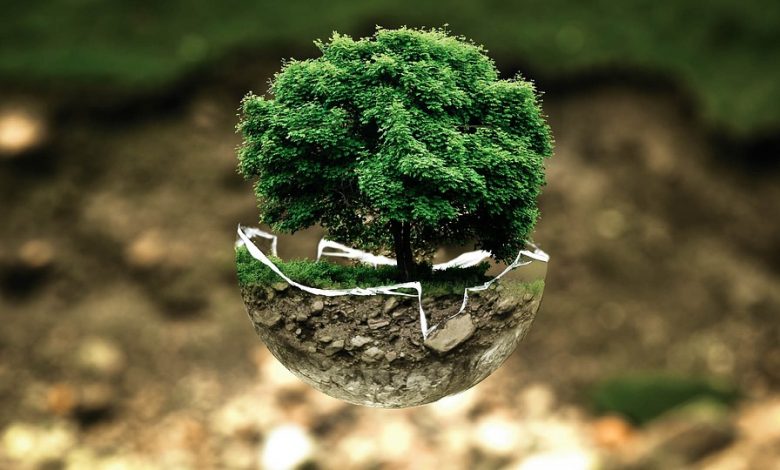Connexion: Need for councils to initiate climate change action


By Joachim Ng
The proverbial Joseph’s seven years of abundance followed by seven years of scarcity is going into phase 2 next year in Malaysia. Residents in Kinta Valley and Klang Valley have enjoyed abundant rainfall and copious flowing tap water during phase 1. These good times will soon end.
According to a report by the National Water Research Institute of Malaysia four years ago, an extreme drought is predicted to affect Peninsular Malaysia for 10 years, starting next year. Ten years of drought will prove to be too long to endure if effective strategies are not put in place, experts have warned.
In July, the Malaysian Padi Farmers Brotherhood Organisation stated that farmers in Kedah may stop padi planting due to extreme weather and low water supply, raising concerns about Malaysia’s ability to ensure food security.
Nurfitri Amir Muhammad of the Malaysian Food Security and Sovereignty Forum expressed his anxiety last month: “We are just months away from this potential crisis in 2025. Are we prepared for it?” He warned that without readiness, the country could face severe food shortages.
There is a biblical story about a man in ancient Egypt called Joseph who interpreted a dream for the Pharoah. He said the dream revealed that there would be seven years of plenty followed by seven years of famine. The Pharoah appointed him governor of Egypt, and Joseph proceeded to stockpile food surpluses in the cities. After seven years a regional drought came, and neighbouring countries even bought food supplies from Egypt.
Globally, we have gone nine months beyond the world climate’s turning point. 2023 was the hottest year since weather records began in 1850, and was also very likely to have been the hottest in the past 125,000 years. According to the European Union’s Copernicus Climate Change Service, every month last year since June was also the planet’s hottest on record compared with the corresponding month in previous years.
In Malaysia two children died of heatstroke and severe dehydration last year. The Meteorological Department issued heatwave alerts this April in several states. Far from being a passing series of freak sweltering years, this is the new normal. Between March and mid-June 2024, India recorded 40,000 cases of heatstroke with Delhi enduring 40 consecutive days over 40C.
July 21, 22, and 23 were the three hottest days ever recorded worldwide, and towards the end of that month UN Secretary General Antonio Guterres warned that billions of people were facing an “extreme heat epidemic – wilting under increasingly deadly heat waves.”
August 2024 beat last year’s August heat record and the World Meteorological Organisation commented early last month that “thresholds are all the time being beaten” and should trigger a global red alert.
Over a 21-year period, Ipoh registered the highest temperature rise of 6.75C among five urban centres measured, beating Johor Baru (6.70C), Georgetown (6.37C), Bayan Lepas (5.63C), and Kuala Lumpur city centre (1.64C). It’s a record that nobody envies.
The current wet spell bringing cool weather is dangerously deceptive. In Penang, violent storms caused 200 roadside trees to fall, destroying cars and damaging homes last month. A father and daughter who were passengers in a car were crushed to death when strong winds blew down trees in a private compound. In Kedah, 675 people had to be evacuated to temporary shelters.
“These floods in Kedah were unexpected because of climate change,” said Deputy Prime Minister Datuk Seri Fadillah Yusof last month. Floods inundated nearly all the padi fields in Kedah’s mukim of Jitra, resulting in more than RM2 million of crop losses.
Are we prepared for the December-January monsoon? Last year, search and rescue teams had to supply food parcels to hundreds of stranded flood victims. Many rivers, including Sungai Perak, rose to dangerous levels and bridges were damaged. Be aware that extreme rain days are getting more frequent with climate change, and sudden deluges are followed by long dry spells that mean drought in some parts.
But after the monsoon, are we prepared for the drought that follows? Many scientists believe that the climate system is changing and changing in ways that are faster and less predictable than previously thought. The planet’s warming is accelerating.
Everyone needs to do something to slow climate change, because we are all part of the cause – except for the forest-dwelling Orang Asli and other indigenous forest tribes in the world. So, what are you doing for the climate?
If you live in an area with abundant rainfall currently and during the monsoon, are you harvesting rainwater for the coming proverbial seven years of drought and to supply drought-hit farming areas? Highly unlikely, because in times of abundance we let it go down the drain to the sea.
Almost exactly half the abundant rainfall in Malaysia is wasted as discharge flowing out to sea. As far back as 2016, Institution of Engineers Malaysia president Datuk Lim Chow Hock had called for measures to store much of this rainwater. “We must make sure that whatever comes down is harvested,” he said.
Be like Joseph: Store the excess water. The Perak State Government must organise a mass effort that involves all households that enjoy a great abundance of rain, with Ipoh City Council organising it for the capital.
Perak’s foremost Green Building Index Platinum-Certified Building, known as 1 Lasam in Ipoh developed by Bonanza Venture Holdings Sdn Bhd, is the best example of a citizenry in action to dampen climate change.
Helmed by executive chairman Datuk Lim Si Boon, the company is a leader in green technology application. On the roof top is a huge rainwater harvesting tank. Drains run along the roof collecting rainwater, and gutter pipes carry the discharge to a gigantic pump at the ground which pumps the water up to the huge rooftop tank. In addition to the massive storage tank, the roof top houses 100 solar panels to generate electricity for the pump and other forms of power usage within the building.
What green task does your office or house roof perform?
Every office building, whether public or private, must have a green roof. And so must every residential property and every utility building. Do we have a law to compel performance? No. This is where the laws of Malaysia are running out of step with climate change.
We need city councils to initiate much-needed changes through enactment of by-laws compelling owners of all existing non-residential buildings to green their roofs with rainwater harvesting, solar panels, or vegetation. Councils themselves own buildings and must take the lead.
All new buildings must have an underground level to house storage facilities for harvested rainwater. All new office and retail complexes, carparks, sports stadiums, playing fields, and all new government buildings must come with underground water storage.
This costs money, of course. But how much damage is cost by floods and droughts?
How about residential buildings? All new housing estates and condominiums must come with green roof features such as vegetation, solar panels, and rainwater harvesting systems. If all three features are missing, no building permit should be issued.
The easiest to set up is a solar panel electricity generation system. Existing residential buildings haven’t gotten into the act, with less than 1 in 50 owners bothered to spend such money. Councils must stir up the action by getting solar panel suppliers and installers to do the job without charge. In return, they get to own the generated electricity which they can sell to the building or house owners and to the national grid.
Vegetation will not be a viable option for existing roofs, because the roof needs to be laid with a sealant to prevent roots from growing into the structure and causing leaks. Then a substrate needs to be laid to allow excess rainwater to run off. But roof plantings should be made a regular option for all new commercial buildings, as plants dampen the heat.
For existing residential buildings, the choice is between solar panels and rainwater harvesting. YLCO Museum curator Ignatius Chew has a rainwater harvesting system at his own house. All he needed to do was install gutter pipes to drain rooftop water into a storage tank on the ground. The harvested water is used for watering plants and washing the compound. You could easily do the same.
===============
Disclaimer: The views and opinions expressed in this article are those of the author and do not necessarily reflect the official policy or position of Ipoh Echo


